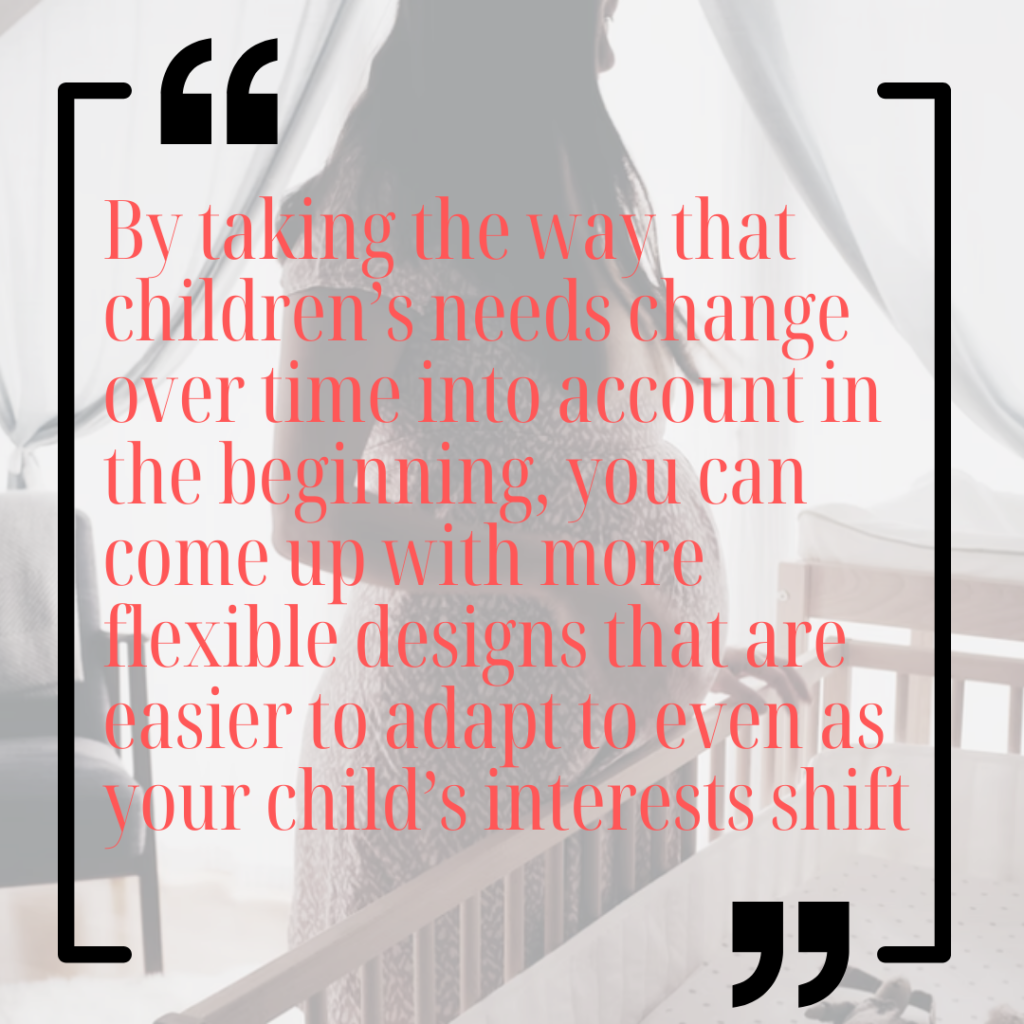Whether you’re looking to design a bedroom, a nursery, or a playroom, creating a unique space for your children is usually a bigger job than you expect. This is especially true if you want to come up with something that will stand the test of time. Kids flex and their rooms should too. If they don’t, then sooner or later that “perfect” room you designed for your little will be outdated and possibly even unwanted. Please, I am sure there is something you would much rather do than completely redesign your kids’ rooms every few years!

Of course there is.
By taking the way that children’s needs change over time into account in the beginning, you can come up with more flexible designs that are easier to adapt to even as your child’s interests shift. There will still be periodic changes that have to be made, of course, but this will keep you from having to start from the ground up each time. Here are a few things to keep in mind to help you create some of these more flexible spaces for your kids.
Start Simple
When coming up with the initial design for your child’s bedroom or playroom, it’s a good idea to take something of a minimalist approach to your design. Try to figure out what the absolute essentials are, then see if there is an age-agnostic way to approach them. Add color to the room, but skew a bit more toward light or neutral shades instead of going with brighter more extreme colors that your child may grow to dislike.
Invest in a few key furniture items that can be repurposed over time instead of buying specialty pieces that will only be used for a short while. Use colored rugs and other removable accents instead of going for changing the carpeting. Your goal is to create a simple space that has a lot of potential so that as your child’s interests change, you’ll have a base to move back toward and adapt the room from.
Customize the Little Things
Once you have a base design for the little’s room, it’s time to start customizing it to make it appear much more in line with their interests. This is where you can get creative and really try to match the room to your child’s personality. Lamps, framed art, decorative items, and more can go a long way toward customizing the space while still being relatively easy to remove and replace if your child loses interest over time.
This is also a good time to consider painting furniture items such as desks and dressers. While this may not always be an option, most of the time it’s not that big of a deal to add a coat of paint to simple furniture items to help them better match the look of a room. By painting these accent pieces to match the overall layout of the room, you can make a notable change to the space that can be redone or updated in the future as needed.
Designing with Kids
As your children grow, be sure to get their input periodically so that you can make additional changes that actually align with their interests. This doesn’t mean that you have to rush out and buy everything that your child wants, of course; use these periodic chats to gauge how happy they are with their room, what sort of changes they might be interested in, and if there are any pieces of furniture or decorations that they seem to be outgrowing. The nature of their room is going to change over time, so make sure that they are a part of the conversation on how it needs to change.